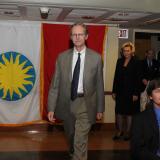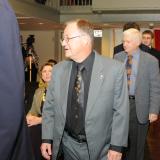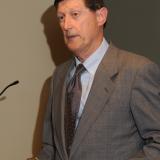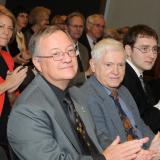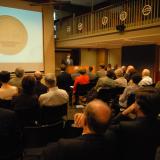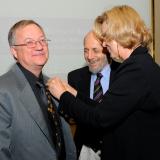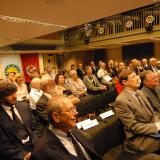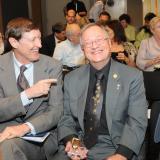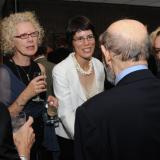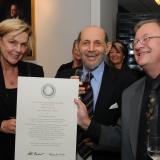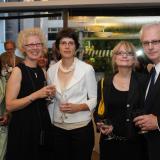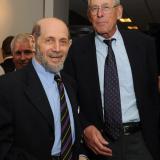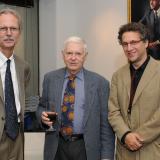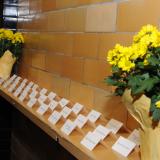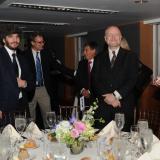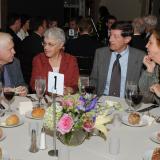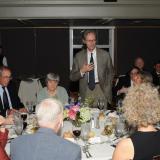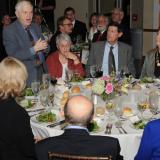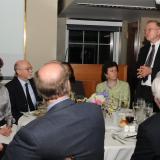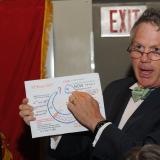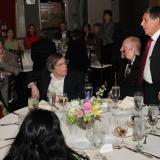2008 Gruber Cosmology Prize
J. Richard Bond’s approach to cosmological questions combines a unique blend of original theory and full involvement in the observations made by experimental teams.
2008 Cosmology Prize Recipient
Laureate Profile
During the past 20 years, J. Richard Bond has been one of the world’s foremost thinkers on difficult questions about the basic map of the universe, including its size shape and age.
"When I entered the subject in the early 1980s, I thought it was a bit flaky because it wasn't very precise. What has happened throughout my career is that we've seen it through to this remarkably high precision field. We're going right out to the edge of the universe and determining things to an enormous degree of accuracy," says Bond.
Bond is best known for throwing open the window on the universe’s origins by listening in on the universe's earliest "baby cries"- contained in cosmic background radiation (CBR), the oldest light in the universe. The CBR is an energy fossil of the ultra-early universe.
It is the oldest light energy that any telescope can detect, representing the photon afterglow of the Big Bang, liberated from matter about 380,000 years after "the beginning." Thus, by looking in the CBR, astronomers mapped the ripples in the light-matter fluid just as the photons broke free.
Much information on the birth of the universe came from ultra-sensitive detectors on the Boomerang telescope’s long duration balloon flights around the Antarctic and the Cosmic Background Imager in Chile, for which Bond was the lead theoretician. This CBR data delivered exquisite maps of the period when the photons were freed at 380,000 years that showed dark energy accounts for about 70 percent of the universe's mass and energy, while a further 25 percent is dark matter. Humans and all we see - planets, stars, nebulae - are cosmic bit players comprising only about five per cent of the universe.
Bond is currently in the midst of the next generation of experiments that will not only greatly increase the accuracy of the basic cosmic parameters, but may point to absolutely new sub-dominant phenomena that could provide further clues to the ultra-early and ultra-late universe.
"The world-wide push to solve the big questions about the universe has given me the joy of collaborating over the decades with a very large band of friends, here in Toronto, in Canada, in the US and Europe, really great experimentalists and theorists all." says Bond.
Citation
The 2008 Peter and Patricia Gruber Foundation Cosmology Prize is proudly presented to J. Richard Bond for his pioneering contributions to our understanding of the development of structures in the Universe.
Professor Bond's work has provided the theoretical framework to interpret the observed inhomogeneities in the fossil radiation left over from the early stages of expansion of the Universe---the Big Bang. Professor Bond's research has helped us understand the transition from the nearly featureless early Universe to the wonderfully structured world of galaxies, stars and planets today.





